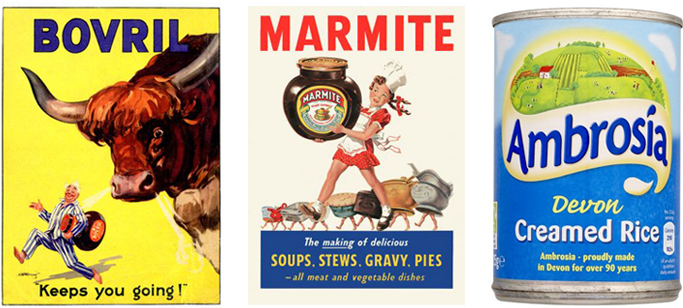In February 1970 Cavenham shares soared amid rumours something big was about to happen. A complete reorganisation of the company, valued at £11.25 million, followed: Cavenham bought controlling stakes in Sir James’s French dietary food company and other businesses, while Paris-based Societe Generale Occidentale, controlled by Sir James and Alexis De Gunzberg, became the ultimate parent company, holding 68 per cent of Cavenham Foods. It also owned 80 per cent of Banque Occidentale, and 80 per cent of a bank based in Holland.
With the broad economy looking in better shape, Sir James turned his attention to further acquisitions. In January 1971 he purchased the McColl confectionary chain of 422 shops. Jim Wood, an exceptional manager who had already made good profits from several of Sir James’s smaller chains, led McColl to profitability within months.
This gave Sir James the cashflow to fund his first really big takeover: household food brand Bovril. A bitter battle ensued, but eventually Sir James won, buying Bovril in a textbook takeover for £14.5m in August 1971. He called it the most important deal of his life.

Cavenham had now become a major force in the British food industry. Further takeovers followed, including Moore’s Stores, Wright’s Biscuits, the South African Marmite company, and Allied Suppliers, a group of some of the best-known British brands including Liptons, Home & Colonial, Maypole, Presto supermarkets and others. The Allied bid, at £86m (when Cavenham was worth £65m), was one of the biggest Britain had seen.
At its height, Cavenham would employ 60,000 people, and with sales of £1.6bn by 1977, it was three times the size of either Sainsbury or Tesco, making it the third-biggest food company in Europe. And as Bovril and Allied profits grew, Sir James proved he was not only adept at takeovers, but could also manage large groups.
“We started by acquiring and reorganising a group of small companies, largely in confectionary which for the most part were run down to the point where they would have to be put into liquidation – and which in the process would have put some 2,000 people out of employment.”
“We reconstructed this groups of companies by strengthening management, closing and selling out-of-date factories, investing the proceeds to modernise other factories, develop new products and put the companies back on the road to healthy organic growth. It sounds easy but it was not. We almost failed – but we also gained a great deal of experience.”
More Supermarkets … offshore

Grand Union
Sir James made his first significant investment in the United States, with the purchase of a 51 per cent controlling interest in the supermarket chain Grand Union. The acquisition of Colonial Stores, and a further 100 stores owned by the Texas-based Weingarten chain, by Grand Union in 1978 was followed by UK supermarket chain Caters in 1979.
Despite being the tenth-biggest supermarket chain in the US, Grand Union was not in good shape when Sir James took over: sales of $1.5bn per annum were only generating $1m in after-tax profits.
“It’s almost impossible to buy your dinner there.”
By Sir James’s standards, it had grown away from its core groceries business, selling television sets and electricals alongside food. But by 1977, Grand Union’s manager Jim Wood was opening bigger, brighter outlets as fast as he closed the dingy, small loss-making ones, and he and Sir James were working on a new-look store to differentiate the chain. Revolutionary new programmes were introduced: product information such as fat and sodium levels, organic, free-range and fresh food with lower chemical content, bread baked by French-trained chefs on the premises, food demonstrations, recipes, and spice centres.
By 1979, Cavenham and Grand Union combined were the third-largest food retailer in the world. However the 1980 recession posed further challenges, and it would be a few more years and several hundred million dollars of investment before Sir James got it right.
The solution was found in applying a more consistent approach to branding and innovations across all stores, and the new manager Floyd Hall, former chief executive of Target Stores, had Grand Union back to profitability in less than a year. Sir James eventually sold the chain for $1.3bn, in anticipation of the 1987 stock market crash.
As Jim Wood said, this wasn’t bad considering Sir James purchased it for $125m.
